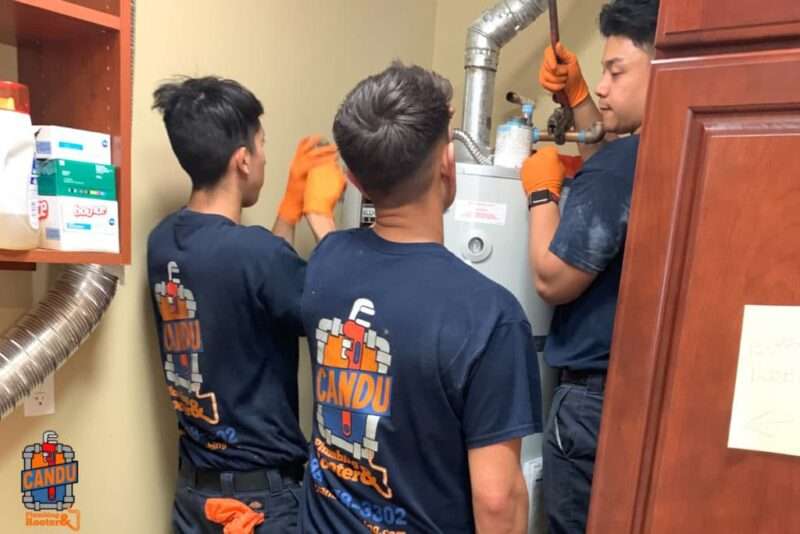When installing a gas water heater, there are several things to consider. The height must be at least 18″ off the ground. This allows the combustible fumes to sink and allow the appliance to get the proper air intake. Listed below are some important safety considerations. Read on to make sure the height of your water heater is safe for your home and your family. We hope this article was helpful.
Proper height for a gas water heater
There are several factors to consider when installing a gas water heater. For safety reasons, the flame should be at least 18 inches from the ground, as required by the Uniform Plumbing Code. However, if you’re installing your gas water heater indoors, there’s no need to raise it to this height. You should place a drip tray underneath your indoor water heater. This way, if you do flood your basement, the water will be caught in a tray.
The Uniform Plumbing Code (UPC) has rules and regulations that must be followed for safe installation of water heaters. These regulations vary from state to state, but in general, you need to allow for at least 18 inches from the ground to the lighting mechanism. It’s also important to keep in mind that local codes may differ, so make sure to double check yours with your local authorities to make sure you’re following the rules and regulations.
To determine the proper height for a gas water heater, first determine the size of your home. Most heaters are 50 inches tall, leaving space for the flue pipe and inlet and outlet. In addition, the height of the burner and the platform should be equal. If you’re installing a smaller heater, make sure you measure the width and height of the rafters before deciding on the height.
Considerations to make
Before you install a gas water heater, you should ensure that the plumbing is up to code. Gas water heaters can produce carbon monoxide, which is highly toxic and can kill you and your family. To avoid this risk, install a TPR valve on the side of the tank. This valve releases hot water when the tank is over-pressurized or too hot. Also, make sure that the drain line is properly connected. It should empty over a floor drain. If you connect it to a drainage pipe, you risk contaminated water backflow.
Once the plumbing is in place, install the hot and cold water lines. Be sure that they are both tightly connected. Use a tube cutter to connect the two pipes. Be sure that you have enough copper flexible water lines and that they are not kinked. Make sure to loop the flex connectors to prevent them from getting stuck. Once the pipes are connected, turn on the water supply. Open the water valve in the tank to fill it with new water. Run a few faucets to bleed out the air in the system. Consider installing seismic straps if necessary.
While taking on a home improvement project yourself can be fun and inexpensive, hiring a professional plumber can save you a lot of money and stress. Licensed plumbers are highly skilled in gas water heater installation and should be the ones performing the work. Remember, that you’re paying for their experience, and if something goes wrong, you may be liable for expensive repairs and legal problems. If you want to sell your house, don’t install a new water heater yourself. In addition to the costs and stress, you’ll have to pay to have it inspected after installation.
Safety considerations
There are several safety considerations to make when installing a gas water heater in a house. First of all, the vent pipe should be installed so that it is at least 18″ above the floor. Secondly, the hot water heater should be set on a solid surface such as metal or wood, so that it does not come into contact with combustible materials. Finally, the water heater must have an adequate supply of incoming air. If it does not, an FV lockout may occur and the fuel will begin to collect in the combustion chamber, which may cause a fire hazard and even an explosion.
Third, there are several safety considerations when installing a gas water heater. For example, an unconditioned garage poses a low risk of carbon monoxide, while homes in the Pacific Northwest typically have combustion appliances in a conditioned space. Another potential safety risk is placing the water heater next to another combustion appliance. The two will compete for air mass, and one will backdraft. A clothes dryer installed close to the heater will reduce the effective exhaust of both.
Finally, gas piping must be properly installed so that it can meet the demand of the heating system. Improper installation can compromise the system’s ability to provide gas and create an energy leak. A properly installed vent hood is also essential. Gas water heaters must be at least 50 gallons of capacity to provide hot water for a typical two-bathroom home. However, larger families may require a 60-gallon model. Call CanduPlumbing for any type of water heater repair.



